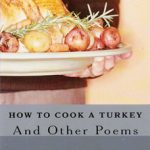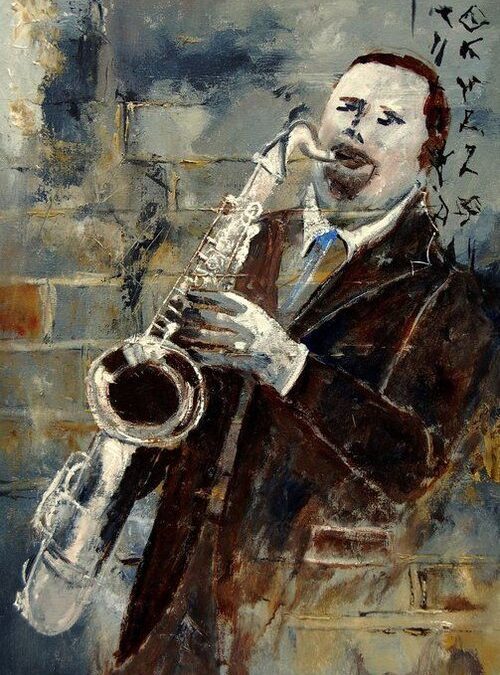
by HF Mystery Writer | Mar 17, 2021 | Indie Author Blog
The Road to Mastery
The smooth syncopated sounds from the saxophone section grabbed my attention with the force of a hammer blow to the temple. Tuxedo Junction played on the juke box. I couldn’t get enough. I used every quarter I had to feed the music machine and searched for change of my few dollar bills.
At twelve years old, the old sounds of the forties and fifties were unknown to me until this moment. At ten, I knew and loved every rock and roll tune that came out. Little Richard’s Tutti Frutti propelled me to buy my first 45 rpm record. Johnny Horton’s Battle of New Orleans followed. Then I heard my all-time favorite, Fats Domino, and his classics, Blueberry Hill and I’m Walkin’.
The rock songs catered to my unsophisticated music appreciation. Glen Miller’s Tuxedo Junction moved me in a different way. The beauty of harmony in sound and the restrained power of the tempo held me, and I didn’t want to let go.
My obsession with the tenor saxophone began. I wanted to play like them. The motivation was strong, sincere, and honest.
I had my previous encounters with piano lessons and tap dancing—both at the direction of my mother. She loved the piano and wanted me to love it too. The problem was I liked the piano, enough to give it a go for three years, but not enough to overcome my desire to be with friends after school, at the expense of practicing. The piano teacher, Mrs.
Glassel, let me know in no uncertain terms by her continuous sighing during our weekly lesson that the end was near.
The tap dancing was different. My mother wanted me to acquire social grace. I became light on my feet and could produce a passable time step when called upon. The venture lasted until the big recital. After the finale, I gave up my Capezios.
The saxophone was different. My mother didn’t ask me to play the instrument. I brought the idea to her. “We’ve spent enough on lessons.” She had a point about the money but missed the point about desire. So I talked with my father. He seemed to understand, and he liked the big band music. “Okay, Howard. If you earn the money for a saxophone, we’ll pay for the lessons.”
I had a chance to quench my yearning. The steam laundry in town needed someone to sweep the two-story building at the end of the work day. Dust and lint buildup posed a fire hazard. My job entailed throwing green-colored powder on the floor and sweeping it up with the lint and dust in it. I lost five pounds every night in the hot building. The thought of the saxophone drove me on. At summer’s end, I earned one-hundred fifty dollars—enough to buy a used saxophone. My father found one in a pawn shop and brought it home.
A man named Ray Sciarra lived in my Catskill Mountain town. He delivered the mail to rural post boxes and gave music lessons. A big band musician who gave up touring to start a family, he played the alto saxophone and clarinet. When I first met him, he wanted me to hear a professional sound. The music floating out from that alto sax was marvelous. This man could take me where I wanted to go.
Whatever he told me, I wanted to do. He knew the secrets I wanted to learn. I practiced continuously. As I progressed, he invited me, on occasion, to join his four-piece band that played at firemen’s suppers, fundraisers for the volunteer departments.
During one afternoon lesson, Ray opened the Glen Miller songbook to April in Paris. “Howard, I want you to take the lead.”
Past puberty, I understood the romantic feeling the song embodied and what the words would mean to someone in love. I summoned the emotion and moved it through the horn.
When we finished, Ray paused and looked at me. “Howard, I couldn’t have played that better myself.”
That moment has stayed with me to this day. A man I respected and admired, a professional musician at the top of his artistry told me I performed at his level. For three-and-a-half minutes, I attained mastery.
Ray not only taught me to play the tenor saxophone, he gave me a lesson in how to succeed. Although he is long gone from this earth, he still lives in my memory and heart. God bless you, Ray.
by HF Mystery Writer | Nov 9, 2016 | Indie Author Blog, Poems
C’mon, you’re pulling my drumstick.
I am proud to announce the publication of my new book, How to Cook a Turkey and Other Poems.
This is a compendium of 23 poems and 28 photographs. Several poems and photos are already award winners.
In this collection you can look forward to reading such compelling poems as Is My Tea Kettle Too Old?, Saliva, I Wish I Were a Soul Train Dancer, Ode to a Grocery Bag and, of course, How to Cook a Turkey.
I highly recommend How to Cook a Turkey and Other Poems as gifts to friends and family for Thanksgiving and for the upcoming holidays. Some may consider reading a few selections around the dinner table.
As Emily Dickinson once said, “If I feel physically as if the top of my head were taken off, I know that is poetry.” Maybe she went just a little too far, but I’ll keep a close eye on everyone.
Save
by HF Mystery Writer | May 26, 2016 | Craft of Writing, Detective Fiction Author, Indie Author Blog

Coho Ferry
The Writer as Artist
Creativity and format shape the writer’s work. The story depends on the ideas the writer brings to the page. The rules of English composition, grammar and punctuation affect readability. How frustrating. If only I could transmit ideas to the reader without paying attention to the rules.
A comparison of writing to painting is worthwhile. I have had the good fortune to learn the visual arts, photography and painting. My fifth grade art teacher, after a year of seeing my drawing and painting, said that I shouldn’t continue with art. I believed her until later in life when photography, then painting, held my interest. Her words still lived in my mind until I discovered that talent wasn’t required for art. One had to learn the rules and apply the lessons. Practice, in my case, did not lead to perfection—but it brought me a heck of a lot closer.
I realized that the images I sought to portray depended on attracting and holding the viewer’s attention through the use of colors, values, contrast and composition. Easy to say, but hard to do. You must give yourself over to the medium. Why do artists do that? Above all, they want to communicate an idea. For the devoted among us, the journey may lead down the path to mastery.
Everyone has access to paper and pencil, but not everyone will be an artist. Some will be dilettantes, having a superficial interest that culminates in a hobby.
What makes the writer an artist? I believe it’s the individual’s dedication to the process of fusing creativity with structure and understanding what appeals to the audience—peppered with inspiration.
We sort ourselves out. Nobody says who can be or can’t be an artist or a writer. No license required. But, in the end, we know.
Save
by HF Mystery Writer | Apr 2, 2016 | Craft of Writing, Detective Fiction Author, Indie Author Blog
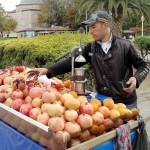 The Art of Being There in Fiction.
The Art of Being There in Fiction.
I have found that the best way to bring a sense of place to readers is through research. The characters may be fictitious, but the reality of location makes the story more interesting and believable.
Many people enjoy reading novels that are set in places they visit. I am one of them. In my youth, I read about the ancient Minoan civilization on the island of Crete. The story stoked my desire to see the place for myself. When I visited the ancient ruins, it was like enjoying an impressionist painting. The structural foundation was there, and my knowledge completed the picture.
Much of the action in the first volume of my Benny Goldfarb, Private “I” series takes place in Colombia. I researched the locations, the history, the culture, and the food. The next year, after the book’s publication, my wife and I had the good fortune to visit Cartagena. We hired a driver to take us on a tour of the city, stopping at places described in the book. He heard me informing my wife, in detail, about the sites. “You have been here before?” he asked. I explained that I was an author. My mind had been here before. This was the first time for my body.
A story can be more than a story. It can morph into a three-dimensional experience that comes alive when you visit the setting—but only if the writer’s research is woven into the tale’s fabric.
Save
Save
by HF Mystery Writer | Feb 19, 2016 | Craft of Writing, Detective Fiction Author, Indie Author Blog
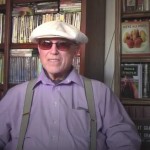 The Path to Writing
The Path to Writing
Check out my new YouTube video, Interview with Howard Feigenbaum, produced by fellow author Jim Hitt. In this video I discuss my decision to become a writer and offer advice for those who wish to become writers.
by HF Mystery Writer | Jul 9, 2015 | Craft of Writing, Detective Fiction Author, Indie Author Blog
 A Cultural Bridge
A Cultural Bridge
Traveling to a country and being there is an important advantage for a writer. Research can’t replace the impressions and feelings one experiences by immersion in the culture. The sound, the look, the language, the humor, the food—all of these make an impact that color the story.
What difference does personal experience make? After all, a work of fiction is what you want it to be. The authenticity of details enhances what is believable. Even readers of fiction will reject descriptions that are inaccurate or don’t ring true. Their attention leaves the story and grapples with what is out of place. The logic of the human mind is always at work.
In some ways, writing is like painting. Most people appreciate realism, firmly planted in the truth of accurate portrayals. Many people will accept impressionism, relying on gestures and forms which rely upon the viewer’s mind for completion. Furthest away from popular taste is abstraction, a created world with few familiar signposts, requiring the viewer to search for meaning in unfamiliar territory.
Art has no definition. Popular acceptance does.
Save
by HF Mystery Writer | Jun 18, 2015 | Countries I Write About, Craft of Writing, Indie Author Blog
 A New Hat – How Illuminating?
A New Hat – How Illuminating?
Hat Illuminated.
A word of warning to people who wear hats on the top level of the hop-on hop-off buses: your hat and your expectations are at risk. I learned the hard way in Buenos Aires. The bus turned a corner. A gust of wind blew. My favorite brown newsboy cap took off across one of the wide streets of the city. There was nothing to do but wave good-bye to an old friend.
As fortune would have it, when the bus returned to the station, there was a street vendor selling hats. He had them arranged on spokes sticking out of a pole. My wife picked out a nice-looking straw hat that fit nicely. The loss of a hat created an opportunity for a acquiring another that would be a fine example of Argentine handiwork. What a stroke of good luck. After examining the hat, I noticed a small tag attached to the sweatband: made in China.
Sure I was disappointed. But not as disappointed as when I bought a bolo tie in Arizona—in the heartland of native-American culture—and the country of origin stamped on the back of the slide broke my heart. If travel has taught me one thing, it’s that my memories of the people and places are the only authenticity I can count on.
by HF Mystery Writer | Jun 8, 2015 | Countries I Write About, Craft of Writing, Detective Fiction Author, Indie Author Blog
 I like to have my characters enjoy a good meal.
I like to have my characters enjoy a good meal.
Barbeque Peru Hacienda
Food is fascinating. If you’re writing about location, why not include food? The characters in the Benny Goldfarb, Private “I” series spend a lot of time in South America. The cuisine changes from country to country, depending on the agricultural traditions. For example, Argentina is big on beef and empanadas. Peru offers a smorgasbord of almost endless types of potatoes. The menus in Colombia are loaded with fish. In my experience, readers enjoy having the local food incorporated into the story.
From my point of view, food is part of a culture. I like to illuminate the setting that characters occupy by occasionally referencing the meals. The reader makes a silent judgment about the food. Sometimes curiosity about a particular dish is aroused and satisfied. The ingredients may add to a feeling of what life is like in that distant place. In any case, I like to have my characters enjoy a good meal. Why not? It’s my story. And they seem to like the experience.
Save
by HF Mystery Writer | May 21, 2015 | Countries I Write About, Craft of Writing, Indie Author Blog
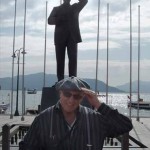 Attaboy, Attaturk.
Attaboy, Attaturk.
Attaturk statue in harbor, southern Turkey.
Mustafa Kemal Attaturk, the father of modern Turkey, made revolutionary changes in Turkish society. The first president of Turkey abolished the existing caliphate, separated the state from Sharia law, abolished the use of Arabic while establishing a Turkish language and modernized the country. Women were free to choose their mode of dress. He encouraged the adoption of western styles.
For me. Attaturk’s preoccupation with the hat is fascinating. He wore a Panama hat, among others. Fedoras, derbies and other western hats were, to him, symbolic of a civilized nation. He required civil servants to wear hats and suits. As a writer, and as a lover of hats, headgear is a visual representation of one’s presentation to the world. We know this from watching old-time western movies. The good guys wear white hats, the bad guys wear black. When we see the hat, we know they are cowboys.
When I visited a small town along the southern Turkish coast, I saw a statue commemorating Attaturk. He was wearing a newsboy-style cap. I was wearing a newsboy-style cap. Immediately, I felt an affinity for Attaturk. We were hat guys. We even preferred the same style. The description of a character’s clothing is important for the reader. The detail in appearance tells a story of its own.
by HF Mystery Writer | May 19, 2015 | Countries I Write About, Craft of Writing, Indie Author Blog
 Work – and how performance tells a tale.
Work – and how performance tells a tale.
photo of shredding agave – Manta, Ecuador
The job doesn’t matter. It’s how the character performs the work that tells a tale.
I love professional waiters. They make the dining experience worthwhile. Knowledge of food and drink is important. Knowledge of people is even more important. For me, excellence deserves respect. Mediocrity does not. We all have our opinions about how people behave. I think most of us would usually agree on issues of good and bad. When words describe the behavior, we can share the vision.
I had the pleasure of visiting Montecristi, Ecuador, the home of the Panama hat. The manufacturing process is low tech. Leaves of the agave plant are shredded to get the fibers for weaving the hats. The quality of the fibers determines the quality of the hat. The people who made the hat I bought were proud of their product. I think of the hat’s beauty every time I wear it. And, in the third volume in the Benny Golfarb series, when I relate the adventure in Ecuador, the hat and the native people in the mountains above Manta, will shape the writing.
by HF Mystery Writer | May 13, 2015 | Countries I Write About, Craft of Writing, Indie Author Blog
 Food - what the locals are eating.
Food - what the locals are eating.
photo of picarones cart in Mira Flores, Lima, Peru
“Tell me what you eat, and I’ll tell you what you are.” Frenchman Brillat-Savarin believed that food had its own story to tell. I agree. Writing, travel and food come together in providing a snapshot of a culture. Eating what the locals eat is the first step in appreciating who they are.
Benny Goldfarb, Private “I” has descriptions of what characters are eating in Colombia. My colleagues often tease me about a chapter making them hungry. That is an unfortunate side effect. I believe that by sharing the same cuisine, I move toward greater cultural appreciation. Speaking the same language also has a similar result. There are concepts couched in speech that have cultural nuances.
What might a citizen of Lima feel on a weekend afternoon in Kennedy Park when enjoying freshly-made picarones, a doughnut-like treat? There’s one way to find out—get in the line at the kiosk, and wait your turn. You will know what generations of Peruvian parents and children have relished.
by HF Mystery Writer | May 9, 2015 | Countries I Write About, Craft of Writing, Indie Author Blog
 Looking Inside a Book’s Main Character.
Looking Inside a Book’s Main Character.
Is Benny Goldfarb, the protagonist in Benny Goldfarb, Private “I”, a Jewish character or a character who happens to be Jewish? He is a man with a moral sensibility and an appreciation of how that happened.
In writing, characters demonstrate who they are through behavior and their reaction to events. In general, we don’t know the religion of the protagonists in the books we read. However, when someone has a name like Benny Goldfarb, an assumption occurs. If the reader makes that assumption, why not satisfy the curiosity—not as the focus of the work but as an interesting detail.
Why should the majority of detective/action/adventure characters have Anglo-Saxon or French names? In this case, Benny Goldfarb is an American who works as a private investigator. In truth, he cannot escape the perception of his ethnicity. In the story, his thoughts and feelings are shaped by his tradition and religious beliefs.
A visit to the Palace of the Inquisition in Cartagena, Colombia transforms Rosa Zuleca, the main female character, when she confronts the effects of the Spanish Inquisition on her family. Although this theme is a subplot, it adds depth to the story by introducing a setting where history, injustice and an individual’s identity meet.
by HF Mystery Writer | May 7, 2015 | Countries I Write About, Craft of Writing, Indie Author Blog
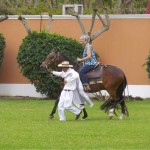 History and Tradition – photo of Paso Fino
History and Tradition – photo of Paso Fino
When is a horse not a horse? When it’s a Paso Fino. Peruvian respect is profound for a breed of horse unique to the nation. The small, sturdy, smooth-gaited horse improved travel over long distances in mountainous terrain. Hacienda owners loved the Paso Fino. Why is this notable to me as a writer? The animal is a physical representation of social class. If I write about Peruvians, I should consider where someone fits in the power and economic structures of the country. The issue is part of the realistic detail that benefits the believability of fiction.
James Michener, in Hawaii, does that very thing. The development of his characters occurs within the context of where they fit in a tribal society meeting the modern era. The writer can show who characters are, not only by what they say and feel, but also by their social position.
by HF Mystery Writer | May 6, 2015 | Countries I Write About, Craft of Writing, Indie Author Blog
 Experience - photo of Cape Horn
Experience - photo of Cape Horn
What’s it like to round the Horn? For me, the experience was extreme. In the space of two hours, there was rain, hail, high winds, snow and sunshine. How did this affect me as a writer? I understand why the Bounty’s crew mutinied. In the movie, Captain Bligh informs the crew that he is taking them back to England by way of Cape Horn. The crew protests, “No, not the Horn!” Shortly after, they seize the ship and turn back to Tahiti. After experiencing the Horn, I would have joined them. Who wouldn’t? Half the ships rounding the horn foundered on the rocks. Their descendants inhabit southern Chile.
Nordhoff and Hall, the authors of Mutiny on the Bounty, traveled to Tahiti. The story benefited from their experience. Their research included perusing Captain Bligh’s journals, the ship’s log and historical accounts. The rich detail in a work of fiction is a thing of beauty.
by HF Mystery Writer | May 5, 2015 | Countries I Write About, Craft of Writing, Indie Author Blog
 Geography – photo of Ecuador
Geography – photo of Ecuador
Everyone has to be somewhere. Is that too obvious? Not to me as a writer. I feel an obligation to help the reader imagine the setting. The geography affects the ease or difficulty of movement. The flora, fauna and weather contribute to a sense of environment.
The Andes shape the use of South American countries. They are a barrier running down the interior of the nation. If you are wealthy, the range is something to be flown over. If you are not-so-rich, the bus trip can take days, or longer if landslides block the road. The isolation of the Incas and other native groups helped them evade the Spanish conquest. Native cultures still flourish at high altitudes. In Benny Goldfarb, Private “I”, the protagonists travel into the interior of Colombia. The detail of the story almost demanded the inclusion of a native group. In this case, the Paez tribe provides another point of view in Colombian society.
by HF Mystery Writer | Apr 28, 2015 | Countries I Write About, Craft of Writing, Indie Author Blog
 Culture - photo of Buenos Aires
Culture - photo of Buenos Aires
I have been to Argentina twice. I love the country’s physical beauty, the friendliness of the people and the food. Travel gives me an advantage. I have experienced the reality of how things are. I can incorporate the detail in my story.
Currently, I am finishing the second book in the Benny Goldfarb, Private “I” series. The setting is Argentina, Brazil and Paraguay. While I constantly research as I write, the experience of being there adds depth to the quality of the writing.
Argentina, like other countries in South America, has a colonial history. The architecture reveals something about the culture. The country still has close economic and social ties to Spain. However, Buenos Aires, like Brasilia, has a fascination with modern architecture. The Puerto Madero neighborhood, built on land reclaimed from the Rio de la Plata, breaks with the past in its physical footprint. Who are the Porteños, as citizens of Buenos Aires call themselves? They are romantic. They invented the tango. They take time out to have drinks with family and friends. They eat the best beef in the world. They love horses and futbol. They have a mythic figure, the gaucho. They have a history of turbulent national politics and corruption.
As I write my story, I try to paint the characters with my understanding of what is normal in their world. I believe the reader appreciates the nuances in the portrayal. Even if the reader hasn’t been to Argentina, he or she can catch a glimpse. I love it.
by HF Mystery Writer | Apr 28, 2015 | Craft of Writing, Indie Author Blog
 On writing.
On writing.
Writing is like painting. There has to be something there to hold your attention, something that makes you stay and look. Not everyone likes Picasso, and not everyone likes Rembrandt. My guess is that neither Picasso nor Rembrandt cared what people thought, or they would have had to take a poll before finishing a painting. So it is with writing. It’s better not to care about what appeals to potential readers. Just go with what you like. Kindred souls will find your work—eventually.
Should you write what you think will sell in the current marketplace, or do you write about what interests you? For me, enthusiasm for the subject is a basic ingredient. That can only come from personal interest or inspiration. After all, your creativity is your contribution to the art. This blog is a continuing essay about the way I see writing.


